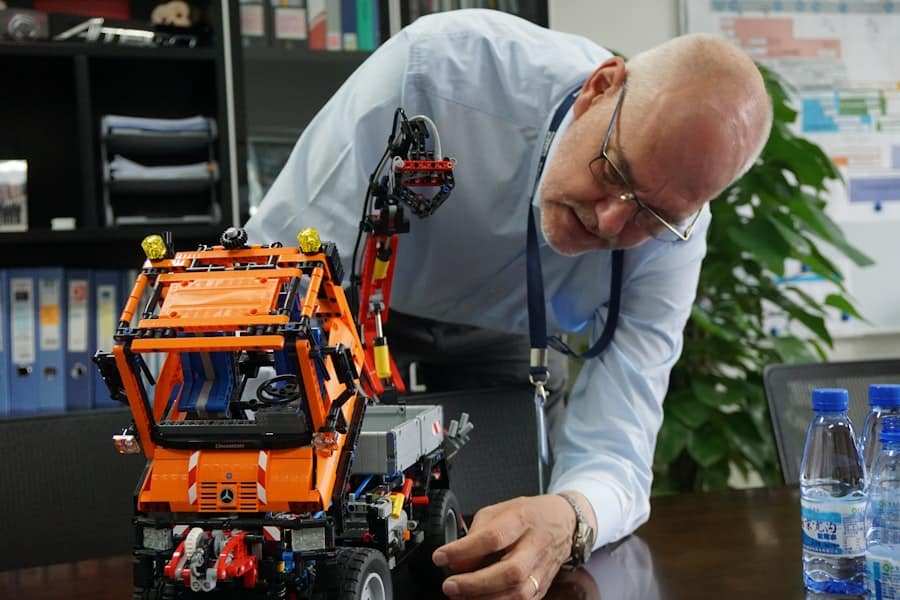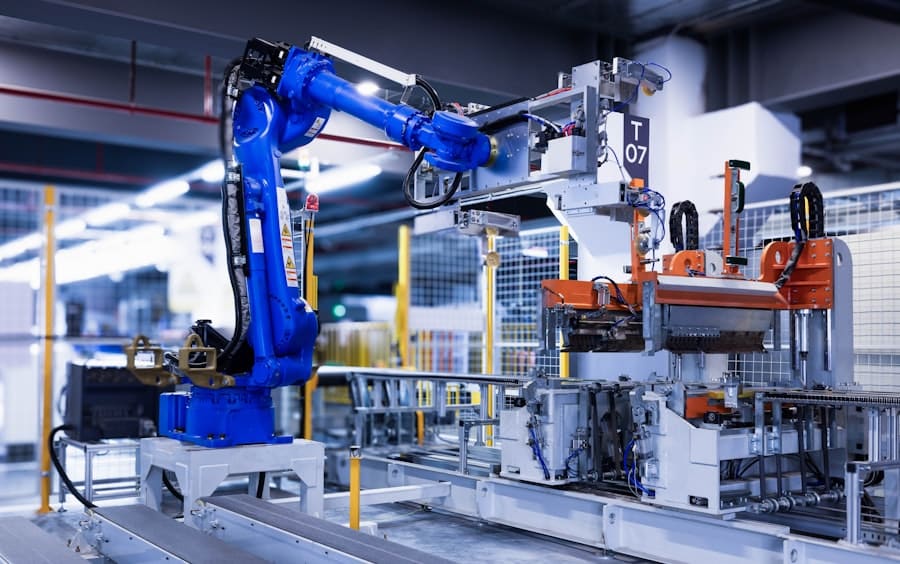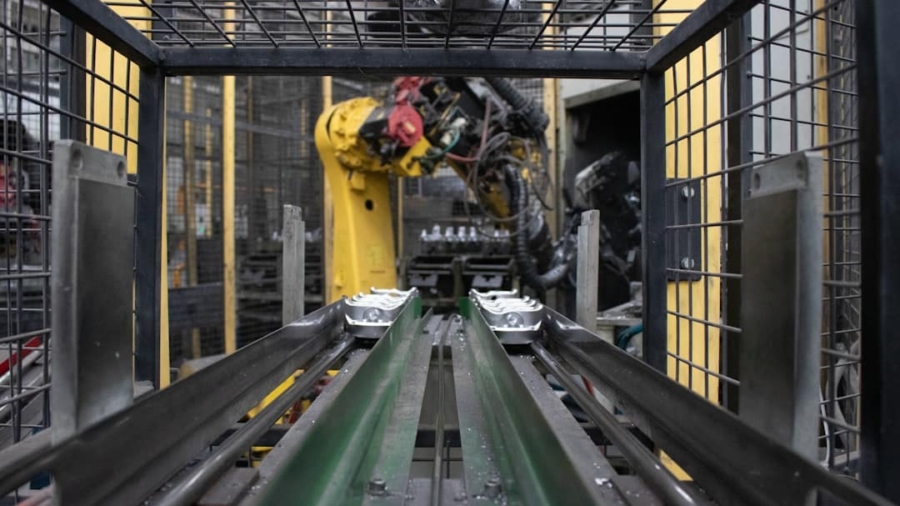The automotive industry has undergone a significant transformation over the past few decades, with robots playing a pivotal role in this evolution. The integration of robotic systems into automotive assembly lines has revolutionized manufacturing processes, enhancing precision, speed, and overall efficiency. Initially introduced in the mid-20th century, robots have evolved from simple mechanical arms performing repetitive tasks to sophisticated machines equipped with artificial intelligence and machine learning capabilities.
This evolution has allowed for greater flexibility in production lines, enabling manufacturers to adapt quickly to changing consumer demands and market conditions. Robots are now integral to various stages of automotive assembly, from welding and painting to assembly and quality control. Their ability to perform tasks with high accuracy and consistency has not only improved product quality but also reduced the likelihood of human error.
As the automotive industry continues to embrace automation, understanding the role of robots in assembly lines becomes crucial for stakeholders aiming to remain competitive in a rapidly changing landscape. This article delves into the benefits, challenges, and future outlook of robotic integration in automotive manufacturing, providing a comprehensive overview of their impact on the industry.
Key Takeaways
- Robots have revolutionized the automotive industry by automating various tasks in assembly lines, leading to increased efficiency and productivity.
- The use of robots in automotive assembly lines has resulted in benefits such as improved quality, reduced labor costs, and enhanced worker safety.
- A case study of a car manufacturing plant showcases the successful implementation of robots, leading to streamlined production processes and cost savings.
- Robots have significantly impacted efficiency and productivity in automotive assembly lines by performing repetitive tasks with precision and speed.
- Challenges in integrating robots into automotive assembly lines include high initial investment, retraining of workers, and potential job displacement.
Benefits of Using Robots in Automotive Assembly Lines
The advantages of incorporating robots into automotive assembly lines are manifold, significantly influencing both operational efficiency and product quality. One of the most notable benefits is the enhancement of precision in manufacturing processes. Robots are designed to execute tasks with a level of accuracy that far surpasses human capabilities.
For instance, in welding applications, robotic arms can maintain consistent weld quality by applying uniform pressure and heat, which is critical for ensuring structural integrity in vehicles. This precision not only leads to higher-quality products but also minimizes waste and rework, ultimately reducing production costs. Another significant benefit is the increase in production speed.
Robots can operate continuously without fatigue, allowing for longer operational hours compared to human workers. This capability is particularly advantageous in high-demand scenarios where manufacturers need to ramp up production quickly. For example, automotive plants that have integrated robotic systems can achieve higher throughput rates, enabling them to meet consumer demand more effectively.
Additionally, robots can perform multiple tasks simultaneously or switch between tasks with minimal downtime, further enhancing overall productivity on the assembly line.
Case Study: Implementation of Robots in a Car Manufacturing Plant

A compelling example of successful robotic integration can be observed at Tesla’s Gigafactory in Nevada. This facility is renowned for its ambitious goal of producing electric vehicles at scale while maintaining high standards of quality and efficiency. Tesla has implemented a range of robotic systems throughout its assembly lines, particularly in battery production and vehicle assembly.
In the Gigafactory, robots are employed not only for their speed but also for their ability to work collaboratively with human operators. This collaborative approach, often referred to as cobotics, enables workers to focus on tasks that require human intuition and problem-solving skills while robots handle repetitive and physically demanding tasks.
The result is a more efficient assembly line where both robots and humans contribute their strengths, leading to improved overall performance. The success of Tesla’s robotic implementation serves as a benchmark for other manufacturers looking to modernize their production processes.
Impact of Robots on Efficiency and Productivity in Automotive Assembly Lines
The impact of robots on efficiency and productivity within automotive assembly lines is profound and multifaceted. By automating repetitive tasks, robots free up human workers to engage in more complex activities that require critical thinking and creativity. This shift not only enhances job satisfaction among employees but also leads to a more skilled workforce capable of tackling advanced manufacturing challenges.
As a result, companies can achieve higher levels of innovation while maintaining operational efficiency. Moreover, the data collected from robotic systems can be leveraged for continuous improvement initiatives. Advanced robotics often come equipped with sensors and analytics capabilities that provide real-time feedback on production processes.
This data can be analyzed to identify bottlenecks or inefficiencies within the assembly line, allowing manufacturers to make informed decisions about process optimization. For instance, if a particular robot is consistently underperforming, engineers can investigate the issue and implement corrective measures promptly.
Challenges Faced in Integrating Robots into Automotive Assembly Lines
Despite the numerous benefits associated with robotic integration, several challenges must be addressed for successful implementation in automotive assembly lines. One significant hurdle is the initial investment required for acquiring and installing robotic systems. The cost of advanced robotics can be substantial, particularly for small to medium-sized manufacturers who may struggle to allocate sufficient resources for such an upgrade.
Additionally, ongoing maintenance and training costs can further strain budgets, making it essential for companies to conduct thorough cost-benefit analyses before proceeding with automation initiatives. Another challenge lies in the potential disruption of existing workflows during the transition to automated systems. Integrating robots into an established assembly line often requires significant modifications to existing processes and layouts.
This transition can lead to temporary disruptions in production as employees adapt to new technologies and workflows. Furthermore, there may be resistance from workers who fear job displacement due to automation. Addressing these concerns through effective change management strategies and transparent communication is crucial for fostering a positive workplace culture during this transformative period.
Future Outlook for Robots in Automotive Assembly Lines

The future outlook for robots in automotive assembly lines is promising, driven by advancements in technology and evolving industry demands. As artificial intelligence continues to evolve, robots are expected to become even more capable of performing complex tasks autonomously. Machine learning algorithms will enable robots to learn from their experiences on the assembly line, improving their performance over time without requiring extensive reprogramming.
This adaptability will allow manufacturers to implement more flexible production systems that can quickly respond to changes in consumer preferences or market conditions. Additionally, the rise of Industry 4.0—characterized by the integration of digital technologies into manufacturing—will further enhance the role of robots in automotive assembly lines. The Internet of Things (IoT) will enable seamless communication between machines, allowing for real-time monitoring and optimization of production processes.
This interconnectedness will facilitate predictive maintenance strategies, reducing downtime and enhancing overall operational efficiency. As manufacturers increasingly embrace these technologies, the role of robots will expand beyond traditional tasks, positioning them as integral components of smart manufacturing ecosystems.
The Role of Robots in the Evolution of Automotive Manufacturing
The integration of robots into automotive assembly lines represents a significant milestone in the evolution of manufacturing practices within the industry. By enhancing precision, speed, and overall efficiency, robots have transformed traditional production methods into highly automated systems capable of meeting modern consumer demands. As manufacturers continue to navigate the complexities of an ever-changing market landscape, the role of robotics will only become more pronounced.
The ongoing advancements in technology promise to further enhance the capabilities of robotic systems, enabling them to take on increasingly complex tasks while collaborating seamlessly with human workers. As we look toward the future, it is clear that robots will play an essential role in shaping the next generation of automotive manufacturing processes.
Recommendations for Implementing Robots in Automotive Assembly Lines
For manufacturers considering the implementation of robots in their automotive assembly lines, several key recommendations can facilitate a successful transition. First and foremost, conducting a comprehensive assessment of current processes is essential. Understanding existing workflows and identifying areas where automation can provide the most significant benefits will help prioritize investments and ensure that resources are allocated effectively.
Additionally, engaging employees throughout the implementation process is crucial for fostering acceptance and minimizing resistance to change. Providing training programs that equip workers with the skills needed to operate and collaborate with robotic systems will not only enhance productivity but also promote a culture of innovation within the organization. Furthermore, establishing clear communication channels will help address any concerns employees may have regarding job security or changes in responsibilities.
Finally, manufacturers should remain open to continuous improvement by regularly evaluating the performance of robotic systems and seeking opportunities for optimization. By leveraging data analytics and feedback from both machines and human operators, companies can refine their processes over time, ensuring that they remain competitive in an increasingly automated industry landscape.
In the realm of technological advancements, the integration of robots in automotive assembly lines has revolutionized manufacturing processes, enhancing efficiency and precision. A related article that delves into the broader implications of technology in our daily lives is “Experience the Power of Samsung Galaxy Tab S8: The Ultimate Tablet.” This article explores how cutting-edge technology, like that used in automotive robotics, is also transforming consumer electronics, offering unparalleled performance and versatility. For more insights, you can read the full article here.
FAQs
What are robots in automotive assembly lines?
Robots in automotive assembly lines are automated machines that are used to perform various tasks in the manufacturing process of vehicles, such as welding, painting, and assembly.
How are robots used in automotive assembly lines?
Robots are used in automotive assembly lines to increase efficiency, improve precision, and reduce the risk of human error. They can perform repetitive tasks with high accuracy and speed, leading to higher productivity and lower production costs.
What are the benefits of using robots in automotive assembly lines?
The benefits of using robots in automotive assembly lines include increased production efficiency, improved product quality, reduced labor costs, and enhanced worker safety. Robots can also handle tasks that are difficult or dangerous for humans to perform.
What are some examples of tasks performed by robots in automotive assembly lines?
Robots in automotive assembly lines can perform tasks such as welding car body parts, painting vehicle components, installing interior and exterior components, and handling materials for assembly.
What are the challenges of implementing robots in automotive assembly lines?
Some challenges of implementing robots in automotive assembly lines include the initial investment cost, the need for specialized training for workers to operate and maintain the robots, and the potential impact on employment in the automotive manufacturing industry. Additionally, integrating robots into existing assembly processes can require significant planning and reconfiguration of the production line.

